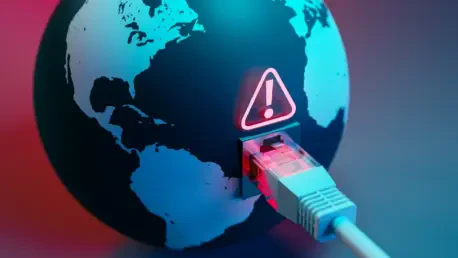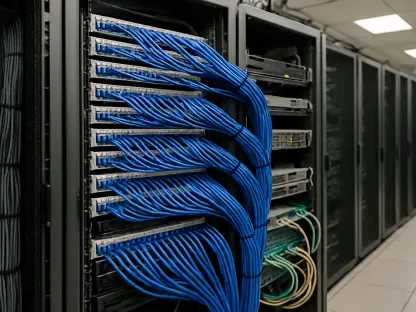The first quarter of 2025 witnessed an unprecedented trend that has captured the attention of the global digital community due to significantly diminished government-imposed internet shutdowns. According to a report by Cloudflare, an internet infrastructure domain leader, there were zero such shutdowns in this timeframe—a phenomenon recorded only twice in the past three years. This development marks a significant shift in a landscape where internet disruptions, especially those initiated by governmental bodies, have customarily occurred during periods of social unrest, political events like elections, or even during national examinations to suppress dissent and control the dissemination of information. The reduction in these forced outages is seen as a promising sign, albeit one that raises questions about its longevity as geopolitical dynamics continuously evolve.
What makes this shift particularly noteworthy is not only the absence of directives to cut internet access but also the backdrop against which it occurs. Historically, nations often resorted to internet shutdowns as a tactic to manage public sentiment during periods of potential unrest or to curb activities considered subversive. This quarter’s lull might be attributed to a decrease in contentious political events. However, experts remain cautious, stressing that this welcome change could be short-lived if underlying tensions resurface. They advocate for a focus on resolving issues that lead to such extreme measures, emphasizing sustainable solutions over short-term fixes. Furthermore, they point to the role of social media platforms and the changing nature of international relations as factors contributing to this decline in government-imposed internet disruptions.
Factors Behind the Decline in Internet Shutdowns
NetBlocks, an internet watchdog group, highlights key factors influencing this decline, noting significant shifts in the strategies employed by both governments and social media platforms. One pivotal change appears to be the winding down of certain USAID programs, which historically drew criticism from countries alleging interference in domestic affairs by supporting non-governmental organizations (NGOs). The curbing of operations and funding for such organizations ostensibly decreases the impetus for authoritarian regimes to resort to internet shutdowns, as the external influences perceived as hostile diminish. This decrease in foreign-sponsored activism, with its roots in well-publicized international backlash, is seen as key to lowering the instances of government-backed digital blackouts.
Another primary driver appears to be enhanced compliance by social media platforms with governmental regulations and demands to restrict certain content or accounts. By aligning more closely with governmental censorship initiatives, platforms like X (formerly known as Twitter) mitigate the need for governments to deploy sweeping shutdown strategies to control online narratives. For instance, X’s compliance with Turkey’s requests to limit access to specific accounts highlights a growing trend of platforms cooperating more effectively with state mandates. According to Alp Toker, director of NetBlocks, this is not merely about reducing shutdowns but about a more tactical engagement where platforms partner to surgically address issues before they escalate to full-scale connectivity disruptions.
Influence of Non-Governmental Factors
While governmental shutdowns have reached a conspicuous standstill, the broader landscape of internet connectivity continues to face interruptions due to causes beyond governmental control. Natural calamities and geopolitical tensions remain influential, reminding stakeholders that internet stability requires a holistic approach. Critical infrastructure damage remains a significant concern, evidenced by disasters like wildfires in Los Angeles, earthquakes in Myanmar, and turbulent weather events in Haiti and Ireland, all of which have previously resulted in substantial bouts of connectivity loss.
Cloudflare and NetBlocks note the enduring nature of these non-governmental causes, casting a spotlight on the multifaceted challenges associated with maintaining continuous internet access. Cyberattacks and infrastructure degradation also pose ongoing threats that demand attention. This positions global internet resilience as not just an issue of governance but also one of preparedness against environmental, technological, and structural uncertainties that can equally impair internet services. Such factors serve as a reminder that efforts to achieve global internet stability must address both human and natural disruptions comprehensively.
Future Outlook and Considerations
In an unforeseen trend during the first quarter of 2025, the global digital community observed a remarkable reduction in government-mandated internet shutdowns. Cloudflare, a leader in internet infrastructure, reported zero shutdowns—a rare occurrence seen only twice in the past three years. This marks a noteworthy change from the norm, where internet outages, often government-imposed, happened during social unrest, elections, or national exams to suppress dissent and control information flow. The decrease in these interruptions is considered a positive sign, raising questions about its permanence amid evolving geopolitical climates.
The significance of this shift lies not just in the absence of shutdowns but also in the context. Historically, governments used internet cutoffs to manage public sentiment and prevent subversive activities during tense times. The current decline might stem from fewer political upheavals, though experts are cautious, warning it may be brief if tensions rekindle. They emphasize solving the root issues instead of relying on temporary fixes. Furthermore, the influence of social media platforms and changing international relations likely play roles in this decline in shutdowns.









